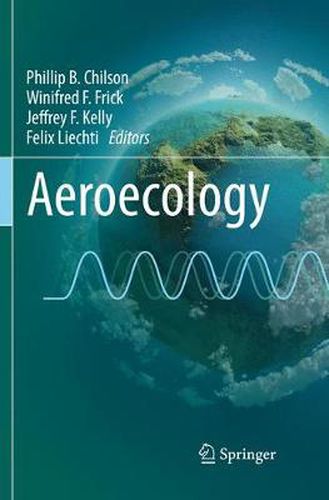Readings Newsletter
Become a Readings Member to make your shopping experience even easier.
Sign in or sign up for free!
You’re not far away from qualifying for FREE standard shipping within Australia
You’ve qualified for FREE standard shipping within Australia
The cart is loading…






This book consists of a diverse collection of chapters that seeks to broaden our fundamental understanding of the ecological function and biological importance of the Earth’s lower atmosphere, which provides a huge living space for billions of animals moving within and across continents. Their migration, dispersal and foraging activities connect water and land habitats within and across continents. Drawing upon the wide-ranging experience of the authors, the book takes an inherently interdisciplinary approach that serves to introduce the reader to the topic of aeroecology, frame some of the basic biological questions that can be addressed within the context of aeroecology, and highlight several existing and emerging technologies that are being used to promote aeroecological studies. The book begins with several background chapters, that provide introduction into such topics as atmospheric science, the concept of the habitat, animal physiology, and methods of navigation. It then continues with a broad discussion of observational methods available to and used by aeroecologists. Finally, several targeted examples of aeroecological studies are presented. Following the development of the chapters, the reader is provided with a unifying framework for investigating how the dynamic properties of meteorological conditions at local, regional, and global scales affect the organisms that depend on the air for foraging and movement. Material presented in the book should be of interest to anyone wishing to gain a comprehensive understanding of the aerosphere itself and the myriad airborne organisms that inhabit and depend upon this environment for their existence. The material should be accessible to a diverse set of readers at all stages of training and across a range of research expertise.
$9.00 standard shipping within Australia
FREE standard shipping within Australia for orders over $100.00
Express & International shipping calculated at checkout
This book consists of a diverse collection of chapters that seeks to broaden our fundamental understanding of the ecological function and biological importance of the Earth’s lower atmosphere, which provides a huge living space for billions of animals moving within and across continents. Their migration, dispersal and foraging activities connect water and land habitats within and across continents. Drawing upon the wide-ranging experience of the authors, the book takes an inherently interdisciplinary approach that serves to introduce the reader to the topic of aeroecology, frame some of the basic biological questions that can be addressed within the context of aeroecology, and highlight several existing and emerging technologies that are being used to promote aeroecological studies. The book begins with several background chapters, that provide introduction into such topics as atmospheric science, the concept of the habitat, animal physiology, and methods of navigation. It then continues with a broad discussion of observational methods available to and used by aeroecologists. Finally, several targeted examples of aeroecological studies are presented. Following the development of the chapters, the reader is provided with a unifying framework for investigating how the dynamic properties of meteorological conditions at local, regional, and global scales affect the organisms that depend on the air for foraging and movement. Material presented in the book should be of interest to anyone wishing to gain a comprehensive understanding of the aerosphere itself and the myriad airborne organisms that inhabit and depend upon this environment for their existence. The material should be accessible to a diverse set of readers at all stages of training and across a range of research expertise.